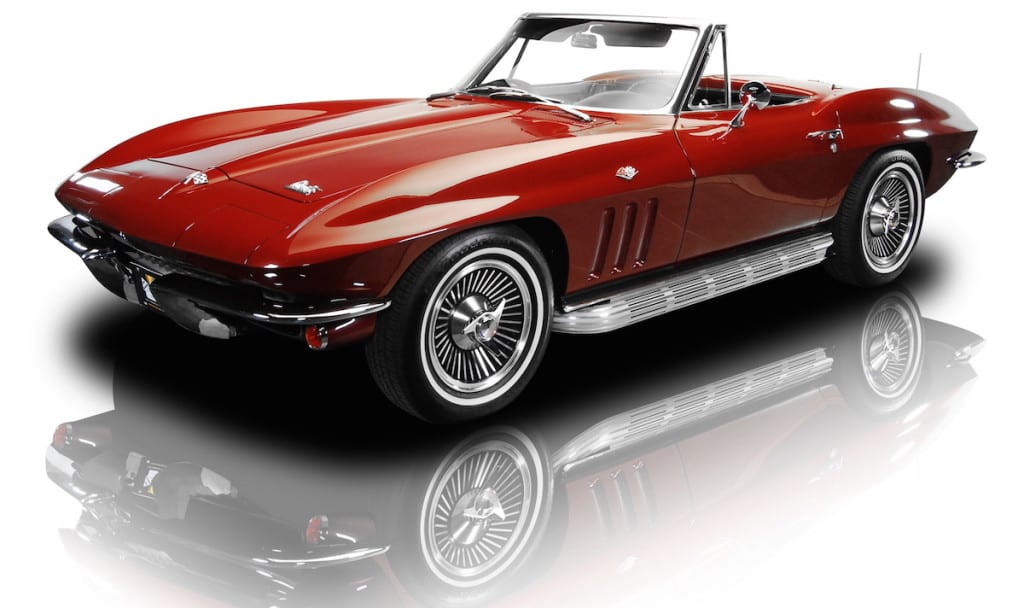Since the very first man walked on earth, there has been a constant hunger for innovation. The advent of the wheel was the most significant technology of its time, and without that simple stroke of genius – where would society be today? One of the most important invention of all time has propelled our society forward, and is the very thing that moves us. As Chevy dealers and around the world can attest, without the wheel, there would be no need for car dealerships.
As technologically-advanced as our world has become, one of the most impressive technological feats of our time, sits on top of four wheels. In the past, plush leather seats, shiny chrome accents, and steering-wheels wrapped in leather defined a luxury car. Today, a vehicle can have all the leather accents, and chrome trim in the world, but without in-vehicle technology – it would all mean nothing.
It is easy to look at satellite radio, iPod integration, Bluetooth streaming, and navigation in a vehicle, and take it for granted. After all, those advanced technologies are so ingrained in our culture, that not having them would be foreign to us. Let’s take a look back, and see just how simplistic things were in the beginning, and how vehicles of today, became so advanced.
In the Beginning
To put things into a historical perspective, the first Ford Model T was produced on October 1, 1908. That’s roughly 107 years of time that has passed to bring us to the present day. The first automobiles to hit American roadways did not have any form of entertainment for passengers, other than the scenery that passed by.
The First In-Vehicle Radio
The first radio stations in the United States did not appear until the late 1920s, at which point, there were over 15 million vehicles on the road. In the early 1930s, automotive manufacturers began incorporating basic radios into their vehicles. WIth decades of driving around with no entertainment, this was a major milestone for the American public. It would take another few decades before the next advancement would take place.
Choosing Your Own Soundtrack
Up until the 1950s, drivers who had a radio in their vehicle, were made to listen to whatever happened to be transmitted over the airwaves at the time they were driving. In the 1950’s, Chrysler temporarily offered in-car record players in vehicles, which never actually caught on.
Large 8-track players were the next big stepping stone for in-vehicle technology, which were quickly replaced with the compact cassette player in the 1970s. These small, compact players were convenient, and fairly inexpensive. The built-in cassette player on vehicles had a long lasting run. Even with the introduction of CD players in vehicles in the 1980s, the cassette tape player remained a factory installed standard. It wasn’t until 2010, that the last vehicle to include a cassette player, was sold.
The CD player offered an even more compact entertainment solution, and drivers could make their own “mix tapes” when writable discs were introduced in the late 1990s.
Introduction of the iPod Sparks Further Innovation
Apple launched its first version of the iPod in 2001. The handheld music player represented a giant leap forward in the way we listen to music, and also the beginning of the end for tapes and CDs. With the invention of the iPod, and the iPhone which shortly followed, drivers wanted their vehicles to do even more for them. Car manufacturers were aware of the public’s desire for further evolution of in-vehicle entertainment, and they worked hard to meet that demand. The result was the infotainment system.
The infotainment system was introduced into vehicles, and their capabilities have been endless. In the beginning, playing your iPod or iPhone’s music through the vehicle was the extent of that capability. Soon, integrated Bluetooth technology made connecting your phone to your vehicle even easier. Drivers could pick up a call, carry on a conversation, and end the call – without even touching their cell phone.
Today, in-vehicle infotainment systems have no limits. Drivers can use navigation, Bluetooth integration, music streaming, satellite radio, and can even use their vehicle as a wireless hotspot. Vehicles have become just as technologically advanced as the technology itself, and automotive manufacturers are able to make it more accessible than ever before.
Chevrolet and Technology
Nearly every Chevrolet vehicle in the 2016 lineup will have the capability of 4G LTE Wi-Fi connectivity. In-vehicle entertainment systems such as DVD players, and Blu-Ray players are available on some Chevy vehicles, and passengers can even connect their favorite video game system directly to their vehicle’s screen. Standard USB ports are available throughout the cabins of many Chevy vehicles, as well as 12-volt charging stations, to keep all of your technology powered-up and ready to use.
Chevrolet further advanced the world of in-vehicle entertainment, with its MyLink technology first introduced for the 2012 model year. MyLink works by connecting drivers to their vehicles like never before. With OnStar integration, driving a technologically-advanced vehicle, also means that you will be safer on your journey. With features such as Advanced Automatic Collision Notification, vehicle diagnostic information, turn-by-turn navigation, and roadside assistance – Chevrolet’s MyLink is doing much more than simply keeping passengers entertained.
Listening to music has never been more diverse. In Chevrolet cars, trucks, and SUVs, drivers can listen to Pandora Internet Radio, SiriusXM Satellite Radio, music from their Bluetooth connected media device, and more. Touch controls and voice commands help drivers safely use their technology, without taking their eyes off the road.
MyLink can connect a driver’s Chevrolet vehicle to their iOS, Android, or Windows mobile phone device, and bring all of their information right to the car’s built-in touchscreen display. Texting, making and receiving calls, and checking e-mail, can all be done with simple voice commands. Chevrolet has made driving with technology safer than any other automotive manufacturer, and their technology has paved the way for other in-vehicle advancements since it was first brought to market.
Merging Safety and Technology
Chevrolet is doing more with new advances in technology than just bringing entertainment to their vehicles. Chevrolet has a long list of available advanced safety features that help keep your Chevrolet, you, and your passengers on the road, and safe. Check out a few of those available safety technologies below:
- Lane Keep Assist – Alerts drivers when they swerve out of their intended lane of traffic, without using a signal indicator
- Rear Cross Traffic Alert – Gives a visual and audio warning when a car is in reverse, and oncoming traffic is detected
- Forward Collision Alert – Continually monitors how close a vehicle is to other vehicles in front it it, and warns when a potential collision is possible.
- OnStar Safely Technology
- Side Blind Zone Alert – Alerts drivers if a vehicle is in their blind spot, with a visual warning on the vehicle’s outside rearview mirrors
The technology that has been available in vehicles has changed drastically since the first vehicle was introduced over 100 years ago. Technology is continuously adapting to our world, culture, and needs – and Chevrolet is committed to staying on top of emerging technology, so that it can be integrated into Chevy cars, trucks, and SUVs. Vehicle luxury no longer simply means having leather seating surfaces, it means having the latest and greatest in-vehicle entertainment and safety technology available. Is your vehicle as tech-savvy as Chevrolet cars, trucks, and SUVs?



